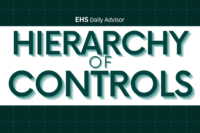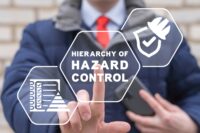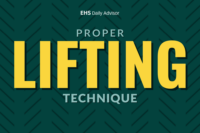Showcasing notable EHS content from our parent company at BLR.
Written safety plans are often the foundation of an organization’s safety program – spelling out safety goals, identifying hazards and controls, outlining standards and training, documenting procedures, specifying roles and responsibilities, and establishing lines and methods of communication and feedback. There are many regulations for which OSHA felt it necessary to require a written safety […]
The U.S. Department of Labor has introduced a new final rule. Effective January 1, 2024, specific employers in high-hazard industries are required to submit injury and illness information under a new OSHA electronic reporting rule. This article discusses who must follow these new OSHA recordkeeping requirements and how to navigate this critical development with specific […]
The mass shooting spree from earlier this month that took place near the end of the Kansas City Chiefs’ Super Bowl victory parade is a tragic reminder that an active shooter situation can happen anywhere. The Federal Bureau of Investigation (FBI) defines an active shooter as someone “actively engaged in killing or attempting to kill people […]
Exposure controls are critical for protecting workers, and they either remove hazardous conditions or place barriers between workers and hazards. Traditionally, companies and regulatory agencies have used hierarchies of controls to determine how they should implement workplace safety solutions. While the ideal solutions vary from one organization to the next, priorities and best practices are […]
Back to Basics is a weekly feature that highlights important but possibly overlooked information that any EHS professional should know. This week, we examine the hierarchy of controls for workplace safety. Exposure controls are critical for protecting workers, and they either remove hazardous conditions or place barriers between workers and hazards. Ventilators might remove airborne pathogens, […]
Back to Basics is a weekly feature that highlights important but possibly overlooked information that any EHS professional should know. This week, we examine the essential steps for safely responding to natural disasters. Severe weather emergencies and other natural disasters can strike any workplace or home, often without warning. In the United States alone, there are […]
Before lifting an object, assess your ability to handle the object. Here’s what you need to know about proper lifting technique.
Back to Basics is a weekly feature that highlights important but possibly overlooked information that any EHS professional should know. This week, we examine how to prevent back injuries in the workplace. Many industries, ranging from nursing and construction to manufacturing and office work, can place significant demands on your back. Back pain can make […]
We all know stress is bad for our health, and working in an already stressful environment can impact work performance and safety. In fact, research from the Families and Work Institute found that 41 percent of workers experience stress “often” or “very often” on the job. The National Institute for Occupational Safety and Health (NIOSH) […]
Implementing a safety program is integral for preventing injuries and illnesses in the workplace, increasing productivity, and engaging employees with safety. Whether you’re a small business or a large enterprise, here are eight steps you can use to build an effective safety program.










